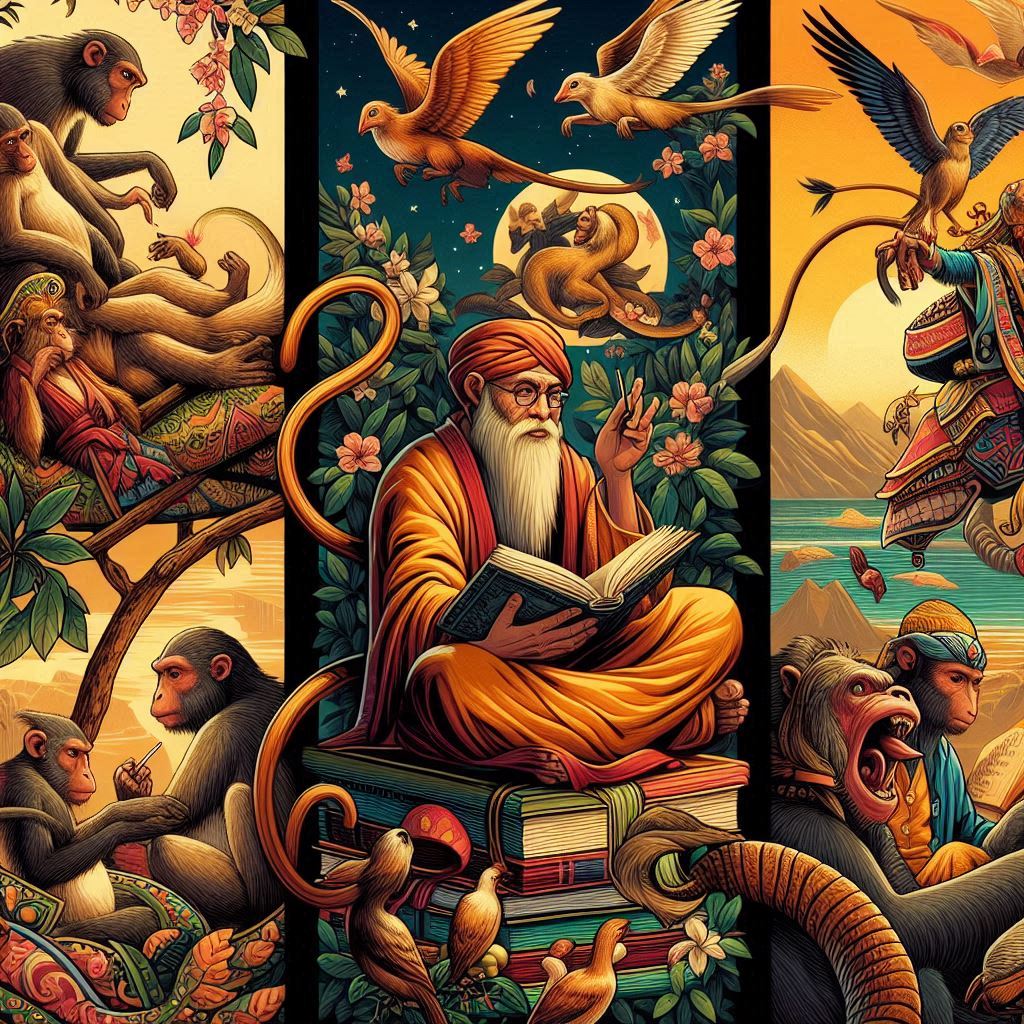
Monkeys in Literature: From Fables to Modern Novels
Share
Monkeys in Literature: From Fables to Modern Novels
Monkeys have long captured the imagination of writers and readers alike, appearing in literature as tricksters, companions, sages, and symbols of deeper human truths. Their presence in storytelling spans from ancient oral traditions to modern fiction, reflecting evolving cultural values and perceptions.
Monkeys in Ancient Fables and Folklore
In early storytelling traditions, monkeys often played important roles in teaching moral lessons.
In Aesop’s Fables, monkeys symbolize vanity and foolishness. One well-known tale, The Monkey and the Dolphin, critiques those who pretend to be more important or knowledgeable than they are.
Meanwhile, in the Indian Panchatantra, monkeys are more nuanced—clever, cunning, and sometimes noble. These tales used animals to reflect human strengths and weaknesses, and the monkey was often a witty survivor outsmarting stronger foes.
In African and Asian folklore, monkeys frequently appear as trickster figures. They challenge authority, break rules, and find creative ways to get what they want—embodying chaos, rebellion, and wit.
Monkeys in Religious and Classical Texts
Beyond fables, monkeys take on symbolic roles in religious texts and epic literature.
In Hinduism, Hanuman—the monkey god—is a heroic figure symbolizing strength, devotion, and courage. His character plays a major role in the Ramayana, one of India’s foundational epics.
In Chinese literature, Sun Wukong, the Monkey King from Journey to the West, is a complex figure who starts as a mischievous rebel but evolves through spiritual discipline. He represents transformation, wisdom, and the journey of self-mastery.
Colonial and Postcolonial Themes
In more modern narratives, especially those influenced by colonialism, monkeys sometimes reflect themes of cultural identity, power dynamics, and societal critique.
Writers like Joseph Conrad and Isak Dinesen use monkey imagery to highlight the tension between civilization and savagery, or to explore human identity in unfamiliar environments. In postcolonial literature, monkeys may represent the “other” or serve as metaphors for the complexities of cultural exchange and resistance.
Children’s Literature and Contemporary Fiction
In contemporary stories—especially those for children—monkeys are often lovable and mischievous characters. They spark imagination and teach lessons about curiosity, courage, and kindness.
Curious George is a prime example. This iconic character represents innocence and the joy of discovery, even when things go wrong. His adventures help children understand responsibility, empathy, and problem-solving.
In modern novels, monkeys may also offer deeper emotional storytelling. In The One and Only Ivan by K.A. Applegate, the character Bob the dog is joined by a wisecracking monkey who adds humor and heart to a serious story about captivity and freedom.
Even in fantasy literature, such as Terry Pratchett’s Discworld series, the orangutan librarian blends comedy with unexpected wisdom, showing that intellect and insight can come from the most unlikely sources.
Symbolism and Deeper Meaning
Monkeys carry rich symbolic weight in literature. They often represent trickery and cleverness, making them natural fits for stories that explore rebellion, transformation, and the clash between instinct and intellect. At times, they symbolize chaos, disrupting the status quo. In other stories, they reflect imitation or mockery—mirroring human behavior in exaggerated or humorous ways.
Yet they can also embody loyalty, wisdom, and spiritual growth, depending on the narrative context. This versatility makes monkeys a powerful literary tool for writers across genres and cultures.
Conclusion: Why Monkeys Matter in Storytelling
Monkeys in literature aren’t just animals—they are mirrors, metaphors, and messengers. From ancient moral tales to modern novels, they continue to play essential roles in exploring what it means to be human. Their curious nature, social complexity, and emotional range make them perfect characters for stories that educate, entertain, and enlighten.
Suggested SEO Keywords:
monkeys in literature, monkey symbolism, monkey in fables, Curious George analysis, monkey characters in books, literary monkeys, monkeys in storytelling, monkey legends, monkey trickster stories, monkeys in fiction
